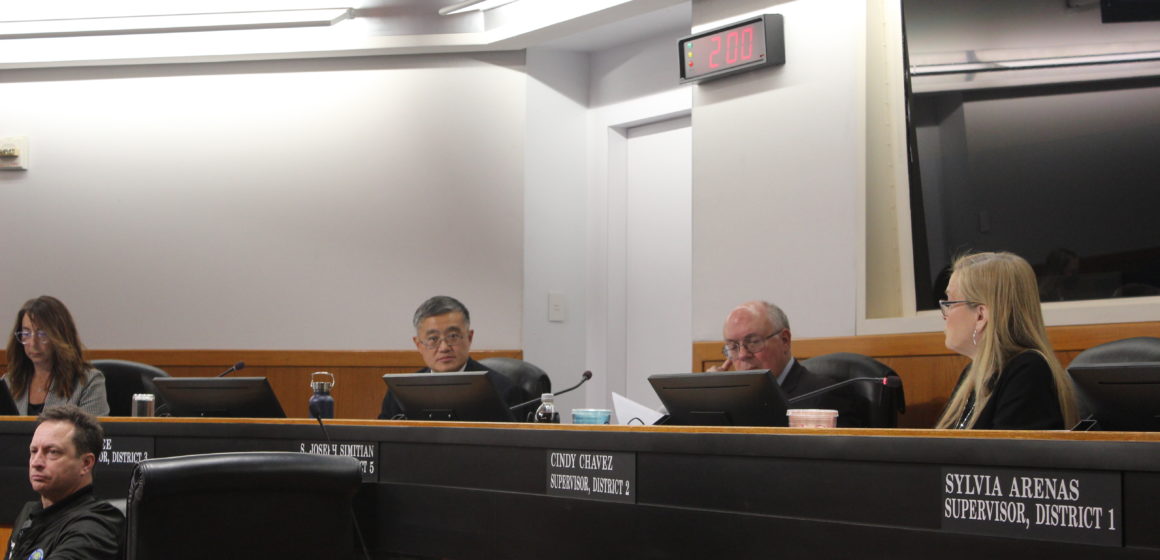A Santa Clara County program to help the severely mentally ill receive treatment has outpaced expectations in its first year of implementation, after a hard fought battle to get it approved.
The Assisted Outpatient Treatment program (AOT) also known as Laura’s Law, allows different authorities and family members to refer people diagnosed with a severe mental illness—schizophrenia or other psychosis disorders—into the program after they refuse prior treatment. The program began last February. On Tuesday, the county’s behavioral health department reported its first year findings.
According to the report, the program received 252 referrals, 50 more than anticipated. Of those assessed, 65 individuals met the criteria.
The report comes as Santa Clara County continues to struggle with its ongoing mental health and substance use crisis. Local officials declared a mental health emergency at the start of last year, citing a record increase in suicides and drug overdoses, an inadequate number of beds in treatments facilities and the overuse of prisons for those in need of treatment.
Soo Jung, the behavioral health division director charged with overseeing the AOT program, said a significant factor in making the program effective has been outreach and engagement. She said family members, who make up the largest share of referrals at 43%, have contributed to the program’s effectiveness.
“The biggest contribution to the success has been extensive outreach, and also a lot of collaboration,” Jung told San José Spotlight. “All this collaborative work has been very important in making a positive experience.”
Jung said that her main priority is to provide those who are referred to the program with safe housing and effective treatment and services.
“My goal is to not really make this AOT program big,” Jung said. “But that if we provide effective services, we can continue to operate so that the clients have all the resources they need to have a stable life.”
The law has been controversial. It was named after Laura Wilcox, a volunteer at a mental health clinic in Northern California who was shot and killed by a mentally ill man who declined treatment in 2001. Although the state law was passed more than 20 years ago, counties had to choose whether to opt in or out of the program in 2021.
Santa Clara County Supervisor Joe Simitian, a proponent of the county opting in to the program, said he was pleased the county’s professional staff, who originally showed opposition toward implementing the law, had instituted the program with good results.
“This is a program that is designed to serve a particularly challenging subset of the population that needs mental health assistance,” Simitian told San José Spotlight. “For that relatively small subset, the program could be a real godsend. So I thought (the report) was encouraging.”
To participate in the program, a referred person must be at least 18 years old with a severe mental illness that prevents them from taking care of themselves or acknowledging their need to seek treatment. People can also qualify if they do not follow a treatment plan, have numerous mental health hospitalizations within 36 months or express violent behavior or make violent threats within the last 48 months.
The program also enables the courts to step in when an individual refuses to follow treatment. According to the report, only 3% of the referrals led to court ordered treatment. This is compared to 20% on average statewide. Santa Clara County Supervisor Susan Ellenberg said this statistic is encouraging. She had been concerned the county’s decision to opt in would result in a potential overuse of the courts to mandate treatment.
“(The 3%) suggests that if we had much more intensive community outreach in treatment, we could be more effective in voluntary engagement of residents, even for people who have been hard to reach in the past,” Ellenberg said. “I believe we can make the most progress by focusing on expanding our slots for treatment, facilities for care and community outreach rather than by relying on court processes.”
Jung said as the program moves into its second year she hopes it continues to produce effective results.
“We are serving (some) of the most vulnerable individuals in the community,” Jung said. “I want to continue to do that. If we made one impact positively for that one person… that’s significant.”
Contact Julia Forrest at [email protected] or follow @juliaforrest35 on Twitter.



Leave a Reply
You must be logged in to post a comment.